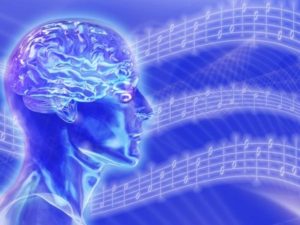 Science is not able to clearly define music. But, whatever it is, music has very unique effects in the brain related to learning, memory, emotion and spirituality. It uses most of the brain in wide circuits that brings about such strong neuroplasticity that it affects the ability to learn other subjects as well (metaplasticity – see post) This post about unique effects of music on the brain is an update of previous posts on music (What is Music, Music and the Brain, Music Training and Neuroplasticity, Music Emotion and Evolution, Music Emotion and Spirituality.)
Science is not able to clearly define music. But, whatever it is, music has very unique effects in the brain related to learning, memory, emotion and spirituality. It uses most of the brain in wide circuits that brings about such strong neuroplasticity that it affects the ability to learn other subjects as well (metaplasticity – see post) This post about unique effects of music on the brain is an update of previous posts on music (What is Music, Music and the Brain, Music Training and Neuroplasticity, Music Emotion and Evolution, Music Emotion and Spirituality.)
Playing, listening and creating music involves most cognitive skills. It has such strong effects that it can drive soldiers to war, dancers into ecstasy, and listeners into deep meditation. Music effects are as powerful as drugs. In recent research, the nucleus accumbens, a brain center related to reward and addiction, was uniquely stimulated when people enjoyed new music.
Sound is Unique
Some consider vision the major sense, since it the way our view of the world is organized, and it acts very quickly.
 However, hearing might be the most influential sense—our hearing sensitive to the shortest and fastest sounds. Everything in nature vibrates and produces sounds—from sound waves of vibrating molecules to black holes 57 octaves below middle C. Sound vibrations are everywhere.
However, hearing might be the most influential sense—our hearing sensitive to the shortest and fastest sounds. Everything in nature vibrates and produces sounds—from sound waves of vibrating molecules to black holes 57 octaves below middle C. Sound vibrations are everywhere.
Sounds uniquely evokes emotions and memories. In meditation sound is often the major focus. Sound brings information from the environment, not just what can be seen, but from far away and behind other objects.
There is never real silence. In nature the quieter we become, the more subtle are the sounds we hear from the environment. In isolation tanks, we hear the sounds inside of our body—the heartbeat, the breathing, the ocean sounds in our ears from air molecules vibrating in ear canals and the electrical sounds of the nervous system.
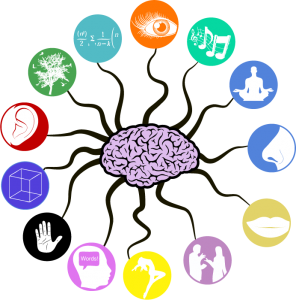 Recent research shows that much of the brain is multi-sensory (see post about how most neurons are connected to multiple different senses). In fact, in our perceptions and experiences, vision and sound are very intertwined.
Recent research shows that much of the brain is multi-sensory (see post about how most neurons are connected to multiple different senses). In fact, in our perceptions and experiences, vision and sound are very intertwined.
Perhaps, because of the way our brain operates, vision does has the upper hand. A recent study showed that when the brain considers both sight and sound while processing speech, if the two are slightly different, visual cues dominate sounds.
Another provocative study showed that our judgments about a musical performance might have more to do with sight that the sound. In this study of both trained and untrained musicians observing music competition, judgment about the quality of a music performance depended more on how a musician moves and looks than what they sound like.
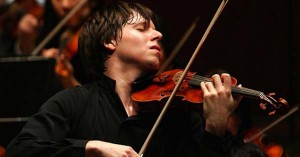 This was noted early in classical music, when the great performer and composer Liszt was famous for dramatic movement, whipping his hair and driving women into a frenzy, some of whom threw their clothes onto the stage. The visual cues imply passion and motivation in the performer.
This was noted early in classical music, when the great performer and composer Liszt was famous for dramatic movement, whipping his hair and driving women into a frenzy, some of whom threw their clothes onto the stage. The visual cues imply passion and motivation in the performer.
Also, another study showed the importance of the multisensory nature of the brain and music. A wide range of people in both the U.S. and Mexico associated certain music with specific colors. A lively tune was most often associated with bright yellow or orange and a funeral song with dark blue/grey.
Effect of Rhythm is Unique
 While melody and harmony have wide ranging effects in human behavior, rhythm has unique power for healing and neuroplasticity. In the brain, melody, harmony, timbre, and lyrics are perceived as movement, as meaning, and as emotion. But, rhythm is a language of its own.
While melody and harmony have wide ranging effects in human behavior, rhythm has unique power for healing and neuroplasticity. In the brain, melody, harmony, timbre, and lyrics are perceived as movement, as meaning, and as emotion. But, rhythm is a language of its own.
Examples of rhythm’s effects include how tribes unite in ceremonies, how armies march into battle, how dancers move and express, how chanting enhances meditation, how gospel music propels congregations, and also how we understand the punctuation of speech.
But, rhythm has other profound effects on the brain, including influencing perception and thinking.
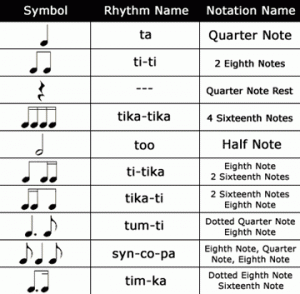 Studies show that learning and memory linked to specific beats in a rhythm stimulated increased learning ability. For example, expecting the emphasis on the fourth beat increased cognitive performance if the learning or perception task is done on the fourth beat.
Studies show that learning and memory linked to specific beats in a rhythm stimulated increased learning ability. For example, expecting the emphasis on the fourth beat increased cognitive performance if the learning or perception task is done on the fourth beat.
Brain alpha and beta EEG rhythms synchronized to a beat and visual cortex sensory stimulus was greater on a specific beat. In perception tests, details are more likely to be seen on the emphasized beats.
Very recently, an inherent relationship with rhythm and brain function was demonstrated. Playing sounds that synchronized with rhythm of the slow wave oscillations during deep sleep enhanced memory.
Sound is Very Complex — The Brain Makes it Seem Simple
 Sound waves are extraordinarily complex—so complex that even current physicists have not yet figured out how the brain comprehends the many factors contributing to an individual note. Even the Fourier transform, equations used by Einstein to analyze light, are inadequate by an order of 13 to show how the brain is able to analyze sound.
Sound waves are extraordinarily complex—so complex that even current physicists have not yet figured out how the brain comprehends the many factors contributing to an individual note. Even the Fourier transform, equations used by Einstein to analyze light, are inadequate by an order of 13 to show how the brain is able to analyze sound.
 Each note is made up of an extremely complex series of vibrations—the harmonics, or overtones. These are in the mathematical ratios 1:2:3:4:5:6 of the vibration of the original note. All of these different tones blend into one sound in the brain.
Each note is made up of an extremely complex series of vibrations—the harmonics, or overtones. These are in the mathematical ratios 1:2:3:4:5:6 of the vibration of the original note. All of these different tones blend into one sound in the brain.
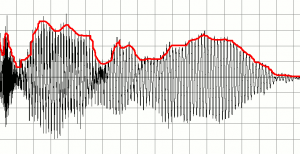 In addition, each type of musical instrument has many other factors related to the timbre, or quality, of the sound. The scientific analysis of the timbre involves the “sound envelope” including characteristics like attack time, decay, sustain, and release. Singing produces extremely complex series of overtones derived from the entire anatomy of the singer. The sound is affected by differences in vocal chords, oral cavity, facial bone structure and many other characteristics.
In addition, each type of musical instrument has many other factors related to the timbre, or quality, of the sound. The scientific analysis of the timbre involves the “sound envelope” including characteristics like attack time, decay, sustain, and release. Singing produces extremely complex series of overtones derived from the entire anatomy of the singer. The sound is affected by differences in vocal chords, oral cavity, facial bone structure and many other characteristics.
 The drum with a large round surface has the most complex timbre and series of overtones, far too complex for current mathematics.
The drum with a large round surface has the most complex timbre and series of overtones, far too complex for current mathematics.
Recently, part of this puzzle of our perception of sound was discovered. When we hear a weak tone, the brain strengthens that tone, and suppresses the other frequencies near it, in order to hear it better. This allows us to pick up relevant cues in the environment even if they are soft. In this “auditory attention filter,” frequencies of an octave are also heard better than other tones. The brain prepares to hear the overtones of notes, either if it hears a tone or if it has a tone in mind.
Receiving thousands of different characteristics the brain instantly perceives one sound.
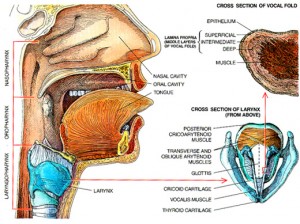 Speech is an extremely complex sound. A recent study, using electrodes on the surface of a human brain (a patient preparing for brain surgery with skull open) demonstrated a vast complexity in how we speak using a sensorimotor network of lips, jaw, tongue, larynx—probably the most complex motor activity. The brain also makes understanding speech very simple.
Speech is an extremely complex sound. A recent study, using electrodes on the surface of a human brain (a patient preparing for brain surgery with skull open) demonstrated a vast complexity in how we speak using a sensorimotor network of lips, jaw, tongue, larynx—probably the most complex motor activity. The brain also makes understanding speech very simple.
Musical Training Uniquely Causes Brain Plasticity
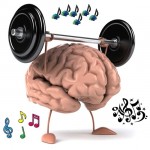 Music training has demonstrated unique effects on learning, perception, performance and language with increases in brain efficiency and fewer neuronal units needed to encode information. It increases other abilities, an effect called metaplasticity.
Music training has demonstrated unique effects on learning, perception, performance and language with increases in brain efficiency and fewer neuronal units needed to encode information. It increases other abilities, an effect called metaplasticity.
Training affects brain structures more strongly as a child. When the training begins before age seven, neural systems are created that last a  lifetime—also, adults heard music and speech better. Random samples show structural changes in auditory and motor regions in 15 months of training in children. Those who played instruments for ten years stayed better cognitively. The benefit was not reliant on continued play. This children’s music therapy charity has also seen the fantastic benefits of music for young children. Music has a huge affect on people both young and old.
lifetime—also, adults heard music and speech better. Random samples show structural changes in auditory and motor regions in 15 months of training in children. Those who played instruments for ten years stayed better cognitively. The benefit was not reliant on continued play. This children’s music therapy charity has also seen the fantastic benefits of music for young children. Music has a huge affect on people both young and old.
Adult training also causes permanent changes in brain structure, but to a lesser degree. Even in old age these changes can be made in  weeks of practice. Changes in brain function can be observed even within three hours of training, but without continued training, short-term changes are reversible. Lifetime musical practice decreased memory loss. Exercise plus music increased cognition with elderly.
weeks of practice. Changes in brain function can be observed even within three hours of training, but without continued training, short-term changes are reversible. Lifetime musical practice decreased memory loss. Exercise plus music increased cognition with elderly.
There are many different brain changes that occur in highly trained musicians including better pitch perception; more cells in motor regions and cerebellum; and a bigger corpus callosum connecting right and left brain.
Very recently, the bidirectional effects of music and language were uncovered. Music training was known to increase language abilities; now, certain languages are shown to help musical ability.
People who speak tonal languages, those with many high and low pitch patterns that affect meaning, such as Cantonese, can learn music faster. Both Vietnamese and Cantonese have six different tones, English has none that specifically affect meaning.
Many Unique Health Benefits of Music
 Group singing produced higher measures of general health and quality of life in the elderly, cancer survivors and caretakers of ill people. Music therapy decreased pain in bone marrow patients.
Group singing produced higher measures of general health and quality of life in the elderly, cancer survivors and caretakers of ill people. Music therapy decreased pain in bone marrow patients.
Specific rhythmic therapies, along with electrical stimulation, improved aphasia in stroke victims. Music training in the elderly helped avoid memory loss. Dyslexia was aided with learning a musical instrument. Parkinson’s patients using rhythm in physical therapy improved gait. In babies, interactive song learning increased smiling, waving, communication, and understanding  pitch.
pitch.
Even dogs in shelters barked less and slept better with classical music and mice with heart transplants survived twice as long if they listened to classical music. These mice had lower interleukin 2 and gamma interferon (both promote inflammation) and increased interleukins 4 and 10 (that stop inflammation).
Musical Improvisation is Unique Brain State
 Study of musical improvisation shows brain findings with some similarities and differences to dreaming and meditation. All three show a deactivation in brain regions that monitor and evaluate. But, each has significant differences.
Study of musical improvisation shows brain findings with some similarities and differences to dreaming and meditation. All three show a deactivation in brain regions that monitor and evaluate. But, each has significant differences.
In jazz improvisation self initiated performance brain centers increase along with many motor regions. Surprisingly language regions were stimulated. Improvisation activates motivation, language, mood, and physical action.
 In hip hop free styling there was increased activity in classic language areas, and the sensorimotor cortex. In addition there was increase in cerebellum activity, related to motor memory and coordination.
In hip hop free styling there was increased activity in classic language areas, and the sensorimotor cortex. In addition there was increase in cerebellum activity, related to motor memory and coordination.
Meditation was similar to improvisation in that it produced a decrease of evaluation centers. It also produced a change in the resting default mode network (see post Meditation) Unlike improvisation there was a decrease in sensorimotor motor regions.
In dreaming, there is a similar pattern of decrease in evaluation centers, but, with very active brain activity and unconstrained cognition. Unlike either meditation or improvisation, the muscles are completely blocked in dreaming.
Music Effects Unique in Spirituality
 Music has a unique relation to spiritual practices. Many meditations use sounds, syllables, prayers, and musical melody, all with repeated rhythm (sometimes with images). These allow absorption of the active mind to allow an experience beyond thoughts.
Music has a unique relation to spiritual practices. Many meditations use sounds, syllables, prayers, and musical melody, all with repeated rhythm (sometimes with images). These allow absorption of the active mind to allow an experience beyond thoughts.
Some spiritual practices (similar to Scuola di tai chi) use movement and rhythm, as well, and these have demonstrated very positive effects on immune and cognitive function. These include Tai Chi, Yoga, yoga and Sufi Dancing. (See post on meditation.)
Previous posts have discussed how adding movements various learning creates a wider neuroplasticity circuit and much more powerful experiences. (see post neuroplasticity.) Very powerful effects occur in religious events, while combining music, the spiritual meaning, listening, looking, and movements such as dancing, rocking and clapping.
Speech, Language and Music
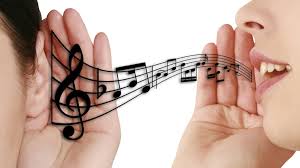 There is reason to think that speech and language evolved from music, not the other way around. For this view music is defined as a generalized creative ability with sound elements – such as timbre, rhythm, and pitch.
There is reason to think that speech and language evolved from music, not the other way around. For this view music is defined as a generalized creative ability with sound elements – such as timbre, rhythm, and pitch.
Speech and music overlap in brain regions related to syntax, meaning and memory.
Because of much greater overlap of music and language in infants, it is possible that language exists and develops as a specialized type of music.
There are many reasons to adopt this view: infants don’t show the same left-right separation until much later; appreciation of music timbre actually needs millisecond activity as well as speech; and in children, language-brain development and music-brain development are parallel for many years.
 Babies appear to have a neural basis of understanding speech and music with musical abilities starting very early – infants respond to pitch and melody. Babies can distinguish scales, chords, and consonant combinations. They recognize tunes played to them for several days. Passively babies learn different musical rules in Western and Indian cultures. In the infant, music and speech have much more brain overlap than adults, and only diverge as the infant grows. Two culturally determined streams then develop, speech primarily in the left-brain, and music in both right and left. This is why music is used so much to help infants learn basic sounds and objects. The babies learning through songs can help them learn things like basic numbers and letters much faster than through normal speech or cue cards.
Babies appear to have a neural basis of understanding speech and music with musical abilities starting very early – infants respond to pitch and melody. Babies can distinguish scales, chords, and consonant combinations. They recognize tunes played to them for several days. Passively babies learn different musical rules in Western and Indian cultures. In the infant, music and speech have much more brain overlap than adults, and only diverge as the infant grows. Two culturally determined streams then develop, speech primarily in the left-brain, and music in both right and left. This is why music is used so much to help infants learn basic sounds and objects. The babies learning through songs can help them learn things like basic numbers and letters much faster than through normal speech or cue cards.
Recently, many new studies show that baby’s brains are aware of language before birth and remember words from the womb. This was measured in three-month premature babies who showed they could distinguish two different languages and recognizes their mother’s voice and some stories told while in the womb.
Evolution of Speech, Language and Music
Recent data push the arrival of modern humans much further back in time, perhaps a million years. It is not clear when language developed but at least more than 100,000 years. Historic evidence of music is sparse, with a flute 40,000 years ago. With such an evolved instrument at that time, music probably existed much earlier.
 Speech and music brain centers may have evolved in animals for accurate evaluation of environmental cues and perceiving pitch in noise.
Speech and music brain centers may have evolved in animals for accurate evaluation of environmental cues and perceiving pitch in noise.
It is possible that language evolved as a combination of two kinds of animal communication—symbolic communication of meaning in apes and bees, and expressive songs of birds with melody and feelings. Darwin wrote in The Descent of Man: “the sounds of birds offer in several respects the nearest analogy to language.” Darwin, also, believed that humans could sing before language.
Recently, it was shown that birds learn songs and their names from parents and then passed this on to others. Also, it has been shown that birds use syntax.
Very recently, it was demonstrated that both babies and birds learn to put together syllables in the same way with stepwise improvement, trying out each part before putting it together. It was known that songbirds voice syllables by listening to other birds and mentors. Stringing them together was assumed to be innate, but, this research implies that it as a result of the bird’s work. Observing infants, it was noted that they learn the same way.
Also recently, a new brain region in birds was found that encodes a memory of learned vocal sounds and allows songbirds to hear, imitate, and learn its species’ song just as human infants acquire speech sounds
Animals Can Dance
 Many scientists assume that animals lack music and dance. Observing a current video of a cockatoo dancing will dispel any such notions. Sea lions now have been shown to dance as well. A chimp was, also, observed with rhythm.
Many scientists assume that animals lack music and dance. Observing a current video of a cockatoo dancing will dispel any such notions. Sea lions now have been shown to dance as well. A chimp was, also, observed with rhythm.
Birds have been noted to have beat induction, including the famous Alex, the parrot. Songs of humpback whales are now well known. Whales develop songs that become popular and are gradually spread throughout the ocean each year.
Unique Effects of Music in the Brain
 Music not only uniquely uses all of the brain, but, stimulates neuroplasticity changes, which increase learning of all types. The brain is uniquely responsive to sound, taking extremely complex multiple qualities of timbre, rhythm, and melody and making them one sound that we hear, stimulating memories, emotions, and learning. The unique qualities of music in human life are just now being appreciated in science.
Music not only uniquely uses all of the brain, but, stimulates neuroplasticity changes, which increase learning of all types. The brain is uniquely responsive to sound, taking extremely complex multiple qualities of timbre, rhythm, and melody and making them one sound that we hear, stimulating memories, emotions, and learning. The unique qualities of music in human life are just now being appreciated in science.